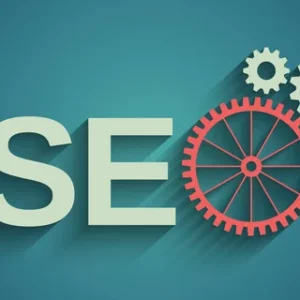The BANT framework has been a foundational tool for sales teams for decades, guiding lead qualification through Budget, Authority, Need, and Timeline. While it provided structure and speed for traditional sales processes, relying strictly on BANT can limit B2B sales potential in today’s dynamic business environment. Modern buyers are informed, collaborative, and digital savvy, and their journeys often do not align with the rigid criteria of classic BANT. Organizations that cling to traditional BANT risk disqualifying promising prospects and missing opportunities for early engagement and long-term relationship building.
Budget Limitations in Modern B2B Sales
In traditional BANT, budget was treated as a gatekeeper, deciding early whether a lead could be pursued. Today, budgets are rarely fixed at the outset, especially for solutions that deliver strategic value. Buyers may explore options, prioritize ROI, and justify funding internally after understanding potential benefits. Strictly filtering prospects based on early budget disclosure can eliminate high-value leads prematurely. Modern approaches focus on value assessment rather than upfront numbers, helping sales teams identify opportunities where solutions solve critical challenges and deliver measurable business outcomes.
Authority is More Distributed Today
Classic BANT assumes authority lies with one decision maker. Modern organizations rely on committees, cross-functional teams, and collaborative processes for purchasing decisions. Limiting qualification to a single authority risks missing the perspectives of influential stakeholders who drive or block the deal. Identifying key contributors across departments, understanding internal influence networks, and tailoring communications to multiple stakeholders ensures the sales team addresses all critical voices. Viewing authority as a network rather than an individual broadens the scope of engagement and increases conversion potential.
Need Must Be Discovered and Educated
Traditional BANT expects the prospect to articulate clear needs early. Modern buyers often explore solutions before defining their full requirements, and they may not be aware of potential opportunities or risks. Limiting qualification to expressed needs can miss latent problems that sales teams could uncover through consultative dialogue. Educating prospects about their challenges, demonstrating the impact of inaction, and collaboratively identifying solutions creates stronger engagement. This approach transforms the Need component from a filter into a relationship building opportunity that fosters trust and positions the solution as essential.
Timelines Are Fluid and Complex
Timeline in classic BANT refers to immediate urgency, but modern purchasing cycles are dynamic. Market pressures, internal approvals, and evolving priorities often extend or accelerate decision making unpredictably. Strictly enforcing timeline requirements risks overlooking high potential opportunities that are simply in earlier stages of planning. Observing engagement signals, digital behavior, and internal triggers allows sales teams to anticipate timing without relying on static deadlines. Flexible interpretation of timelines ensures continued engagement with prospects who are likely to convert when their circumstances evolve.
The Risk of Overlooking Engagement Signals
Classic BANT focuses on predefined criteria rather than engagement behaviors. In today’s environment, buyer activity—such as content consumption, event participation, website interaction, and social engagement—provides more predictive insight into intent than rigid BANT questions. Ignoring these signals can limit sales potential by focusing on disqualifying metrics rather than identifying prospects who demonstrate genuine interest. Modern qualification integrates engagement insights to ensure sales efforts target the leads most likely to move through the funnel.
Digital Transformation Requires BANT Adaptation
B2B buyers now rely heavily on digital channels to research, compare, and evaluate solutions before interacting with sales teams. Classic BANT does not account for this self-directed research, leaving gaps in understanding the buyer journey. Modern BANT incorporates digital behaviors, intent signals, and multi-touch engagement to build a more accurate and predictive profile of the prospect. By combining traditional elements with digital insights, organizations can prioritize leads more effectively and capture opportunities earlier in the sales process.
Collaboration Between Sales and Marketing
Relying solely on BANT can create silos between sales and marketing. Marketing teams collect insights from lead interactions, intent data, and content engagement, providing valuable context for qualification. When integrated with BANT principles, these insights create a continuous feedback loop that improves lead scoring, prioritization, and messaging. Collaboration ensures that sales teams do not miss opportunities that traditional BANT would have filtered out and enables coordinated strategies across both functions.
BANT as Part of a Larger Framework
While BANT remains a useful conceptual framework, it should be applied as part of a larger, more flexible qualification strategy. Modern sales teams use BANT in combination with intent data, engagement metrics, account-based insights, and predictive analytics. This holistic approach balances classic criteria with real-time behavioral signals and organizational dynamics. By integrating BANT into a broader framework, teams reduce risk, avoid false negatives, and ensure a more accurate and effective sales pipeline.
Transforming BANT to Maximize Sales Potential
Modernizing BANT involves rethinking each element with flexibility and context. Budget becomes a measure of value perception, Authority accounts for multiple stakeholders, Need focuses on discovery and education, and Timeline adapts to dynamic readiness. Integrating engagement signals and digital insights ensures that high potential opportunities are not overlooked. This approach allows sales teams to maximize their potential by identifying and nurturing leads that traditional BANT alone would have disqualified.
Engaging Multiple Stakeholders
B2B buying decisions often involve multiple stakeholders with varying priorities. ABM strategies must address this complexity by engaging all relevant decision-makers within an account. This includes understanding their roles, pain points, and motivations. Customized messaging and multi-channel campaigns targeting each stakeholder help increase the likelihood of buy-in and accelerate the sales process. Effective stakeholder engagement ensures that the company’s solution is considered holistically rather than by a single influencer.
Tracking Metrics and Performance
Monitoring and analyzing key performance indicators (KPIs) is essential for ABM success. Metrics such as engagement rate, pipeline contribution, deal velocity, and revenue impact provide insights into the effectiveness of campaigns. Regular assessment allows teams to refine strategies, reallocate resources, and improve targeting. By focusing on measurable outcomes, companies can demonstrate the value of ABM initiatives to executives and stakeholders, securing ongoing investment in these strategies.
Optimizing Campaigns for Better ROI
Continuous optimization is vital to maximize the ROI of ABM efforts. Regularly reviewing campaign performance, A/B testing content, and adjusting outreach based on analytics ensures that strategies remain effective. This iterative approach allows teams to respond to market changes, refine messaging, and strengthen engagement with target accounts. Optimization ensures that every marketing dollar spent contributes to meaningful revenue growth.
About Us
Acceligize is a global B2B demand generation and technology marketing firm specializing in performance driven lead generation solutions. Their services include content syndication, account-based marketing, intent and install-based targeting, and custom campaign strategies. Leveraging data science, technology, and human intelligence, Acceligize helps clients reach high-quality audiences and drive conversions across the full marketing funnel.




